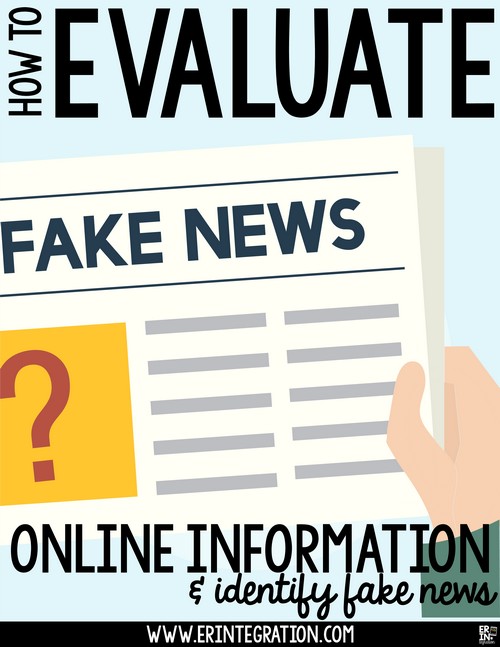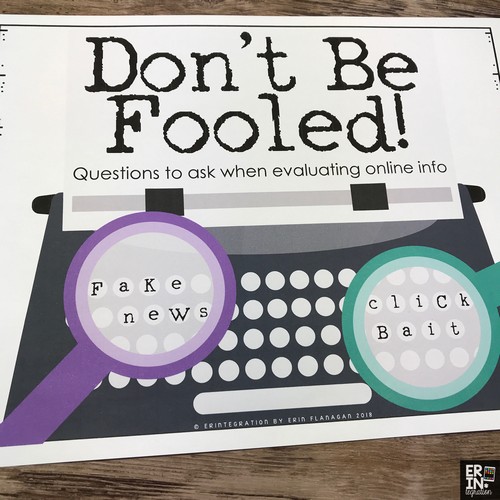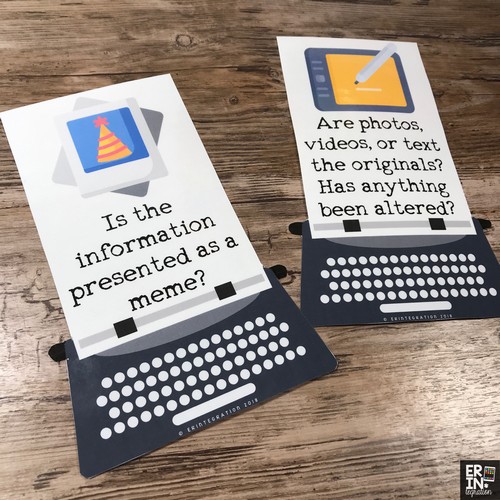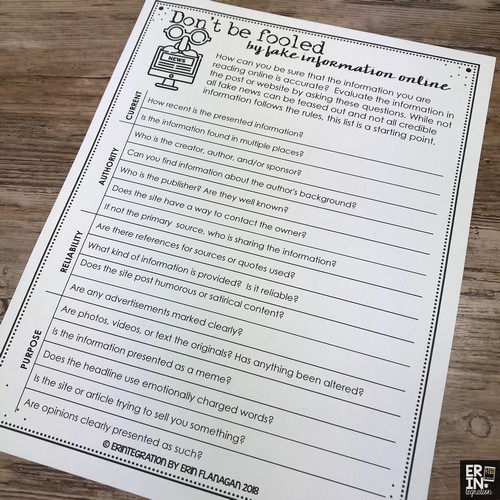Teaching students how to identify fake news is a daunting task since many adults continue to struggle with this skill. It is imperative that we teach these essential digital literacy skills to students so they automatically think critical y before clicking, sharing, and assuming what they see online is true.
I’ve rounded up some resources and lessons for teaching students how to evaluate information online and identify fake news.

1. iCivics Fake News Literacy Unit
Thank you to a member of the Teach With Tech Facebook Group for sharing this fantastic resource. iCivics, founded by Justice Sandra Day
The News Literacy Unit can
2. Fake News Website Evaluation
Another Facebook recommendation, this free lesson includes a
For this lesson to be especially effective, students should not know ahead of time if the website is “fake news.”
3. Debating the Responsibility of Media Companies
Actively Learn has a free PDF lesson guide with links to online books, articles
This site and lessons are geared for High School, but it could be adapted down for Middle. I like how the text sets on Actively Learn allow for annotating and include questions as you read. If your district takes standardized tests online, Actively Learn approximates the appearance of many online testing platforms.
The texts featured for the lesson also tied into Social Studies standards.
4. Historical Event Clickbait & Fake News
Brian Housand has an engaging lesson for creating clickbait headlines and images of a historical event that incorporates research and creation apps/sites. He has examples, a free poster to download and more information here.
You can narrow down the historical time period to a fit a unit you are studying in social studies or to pair with a historical novel. Pic Collage would be perfect for creating the images but those without iPads could use Google Drawing or Book Creator.
5. Newseum
Create a free educator account to access a wealth of materials on Newseum. Their digital literacy section includes videos, interactive activities, downloads, and text.
Newseum is geared toward upper elementary through secondary.
6. Common Sense Media
Common Sense Media has a made it their mission to provide educators and parents with reliable information about online content. This article has tips for spotting fake news online and this video includes 5 actionable ways students can put the tips into practice.
The Digital Citizenship Section for educators includes a wealth of resources for K-12. If you click through to your grade level, you will see specific lessons for news literacy for each grade.
7. Fact Vs Fiction
The Library Girl is definitely an educator worth following and worth a deep dive into her blog here. Her book Fact Vs Fiction was recommended to me recently and it is the textbook for critical thinking online.
8. Fake New Bulletin Board Display
I created an editable bulletin board display with questions for students to ask when looking at information online.

One thing I found in my research is there isn’t a definitive way to spot fake news. Students need to always question what they see and evaluate it.
The questions I included in the bulleting board set do not have “right” or “wrong” answers, rather, they guide the student in thinking critically about the information, its source, and how it is presented to make a

The accents are all editable so you and students can add additional information or change the wording to fit your instruction.
I also included a student printable with all of the questions that they can keep in a binder for reference.

Learn more about the Fake News & Evaluating Online Information Digital Citizenship Bulletin Board Set here.
How do you address digital literacy and evaluating websites and online information? If you use the bulletin board set above, be sure to tag me! I love to hear and see how teachers are addressing fake news in their classrooms.
